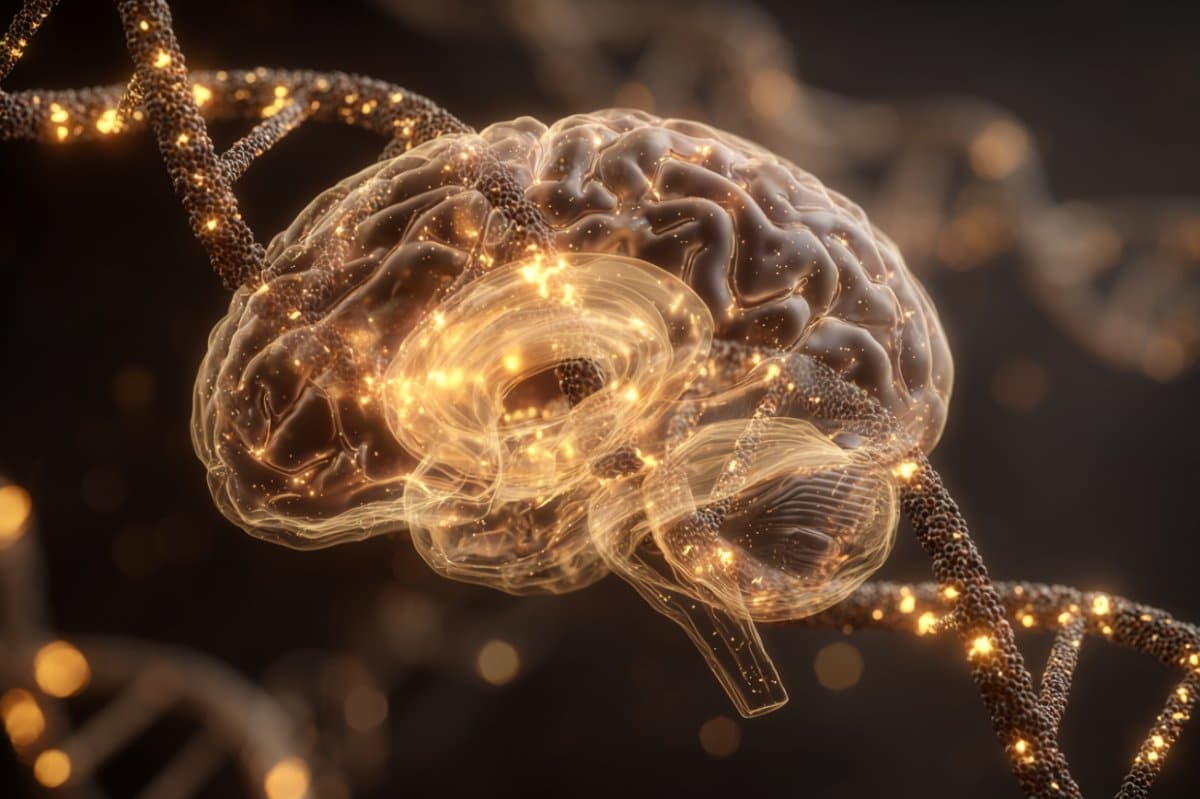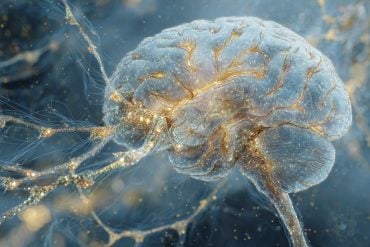Summary: Researchers have identified molecular mechanisms behind age-related memory decline — and shown they can be reversed. Two studies revealed that correcting specific molecular processes in the hippocampus and amygdala, and reactivating a silenced memory-supporting gene called IGF2, improved memory in older rats.
Using CRISPR-based gene-editing tools, scientists restored proper signaling and communication between neurons linked to memory storage and recall. The findings suggest memory loss may not be an inevitable part of aging and could eventually be treated at the molecular level.
Key Facts:
- Molecular Targets Identified: Disruptions in K63 polyubiquitination and IGF2 gene silencing drive age-related memory decline.
- CRISPR Success: Editing these pathways in older rats improved memory performance.
- Therapeutic Promise: Findings suggest future gene-based treatments could help prevent or reverse age-related memory loss.
Source: Virginia Tech
Memory loss may not simply be a symptom of getting older. New research from Virginia Tech shows that it’s tied to specific molecular changes in the brain and that adjusting those processes can improve memory.
In two complementary studies, Timothy Jarome, associate professor in the College of Agriculture and Life Sciences’ School of Animal Sciences, and his graduate students used gene-editing tools to target those age-related changes to improve memory performance in older subjects. The work was conducted on rats, a standard model for studying how memory changes with age.

“Memory loss affects more than a third of people over 70, and it’s a major risk factor for Alzheimer’s disease,” said Jarome, who also holds an appointment in the School of Neuroscience.
“This work shows that memory decline is linked to specific molecular changes that can be targeted and studied. If we can understand what’s driving it at the molecular level, we can start to understand what goes wrong in dementia and eventually use that knowledge to guide new approaches to treatment.”
Targeting memory loss in two key brain regions
In the first study, published in the journal Neuroscience and led by Jarome and doctoral student Yeeun Bae, the team examined a process called K63 polyubiquitination. This process acts as a molecular tagging system that tells proteins inside the brain how to behave. When the system functions normally, it helps brain cells communicate and form memories.
Jarome and his team found that aging disrupts K63 polyubiquitination in two distinct areas of the brain. In the hippocampus, which helps form and retrieve memories, levels of K63 polyubiquitination increase with age. Using the CRISPR-dCas13 RNA editing system to reduce these levels, the researchers were able to improve memory in older rats.
In the amygdala, which is important for emotional memory, the researchers noted that K63 polyubiquitination declines with age. By reducing it even further, they were able to boost memory in older rats.
“Together, these findings reveal the important functions of K63 polyubiquitination in the brain’s aging process,” Jarome said. “In both regions, adjusting this one molecular process helped improve memory.”
Reactivating a gene that supports memory
A second study, published in the Brain Research Bulletin and led by Jarome with doctoral student Shannon Kincaid, focused on IGF2, a growth-factor gene that supports memory formation. As the brain ages, IGF2 activity drops as the gene becomes chemically silenced in the hippocampus.
“IGF2 is one of a small number of genes in our DNA that’s imprinted, which means it’s expressed from only one parental copy,” Jarome said. “When that single copy starts to shut down with age, you lose its benefit.”
The researchers found that this silencing happens through DNA methylation, a natural process in which chemical tags accumulate on the gene and switch it off. Using a precise gene-editing tool, CRISPR-dCas9, they removed those tags and reactivated the gene. The result was better memory in older rats.
“We essentially turned the gene back on,” Jarome said. “When we did that, the older animals performed much better. Middle-aged animals that didn’t yet have memory problems weren’t affected, which tells us timing matters. You have to intervene when things start to go wrong.”
Together, the two studies show that memory loss is not caused by a single molecule or pathway and that multiple molecular systems likely contribute to how the brain ages.
“We tend to look at one molecule at a time, but the reality is that many things are happening at once,” he said. “If we want to understand why memory declines with age or why we develop Alzheimer’s disease, we have to look at the broader picture.”
Collaborative, graduate-led research
Both studies were driven by graduate researchers in Jarome’s lab and supported through collaborations with scientists at Rosalind Franklin University, Indiana University, and Penn State. Yeeun Bae, who completed her doctoral work with Jarome in the School of Animal Sciences, led the study on K63 polyubiquitination. Shannon Kincaid, a doctoral student in the same program, led the study on IGF2.
“These projects represent the kind of graduate-led, collaborative research that defines our work,” Jarome said. “Our students are deeply involved in designing experiments, analyzing data, and helping shape the scientific questions we pursue.”
“Everyone has some memory decline as they get older,” he said. “But when it becomes abnormal, the risk for Alzheimer’s disease rises. What we’re learning is that some of those changes happening at a molecular level can be corrected — and that gives us a path forward to potential treatments.”
Funding: The research was supported by the National Institutes of Health and the American Federation for Aging Research.
Key Questions Answered:
A: Researchers found that aging alters key molecular processes, including K63 polyubiquitination and silencing of the IGF2 gene, which are critical for forming and maintaining memories.
A: By using CRISPR-based gene-editing tools to restore normal molecular signaling in the hippocampus and amygdala, they enhanced memory in older rats.
A: While still early, the findings suggest targeting specific molecular changes could form the basis of future gene therapies for age-related memory loss and possibly Alzheimer’s disease.
About this memory and gene editing research news
Author: Margaret Ashburn
Source: Virginia Tech
Contact: Margaret Ashburn – Virginia Tech
Image: The image is credited to Neuroscience News
Original Research: Open access.
“Increased DNA methylation of Igf2 in the male hippocampus regulates age-related deficits in synaptic plasticity and memory” by Timothy Jarome et al. Brain Research Bulletin
Closed access.
“Age-related dysregulation of proteasome-independent K63 polyubiquitination in the hippocampus and amygdala” by Timothy Jarome et al. Neuroscience
Abstract
Increased DNA methylation of Igf2 in the male hippocampus regulates age-related deficits in synaptic plasticity and memory
The aging process is characterized by a general decline in cognitive abilities, which affects nearly 33 % of U.S. adults over the age of 70 and is a risk factor for the development of dementia and Alzheimer’s disease.
Numerous studies have reported increased neuroinflammation and impaired synaptic plasticity and memory with age in the hippocampus, a major brain region involved in the formation and storage of most memories.
However, much remains unknown about the mechanisms that contribute to age-related deficits in synaptic plasticity and memory.
The Insulin-like growth factor 2 (Igf2) is a genomic imprinted gene that is expressed from a single allele in all species.
Though IGF2 has been shown to be important in development, synaptic plasticity, and memory formation in the hippocampus and administration of IGF2 can improve memory late in life, whether changes in regulation of this gene contribute to age-related memory decline have yet to be explored.
Here, we show that aged (24 months) male rats have increased CpG-site specific promoter methylation and reduced expression of Igf2 in the hippocampus relative to young adult (3 months) and middle-aged (12 months) rats.
Importantly, CRISPR-dCas9 mediated increase of DNA 5-hydroxymethylation, an active transcriptional mark, of the Igf2 promoter in the hippocampus improved memory and long-term potentiation in aged, but not middle-aged, rats.
These data indicate that increased DNA methylation of Igf2 in the hippocampus contributes to age-related deficits in synaptic plasticity and memory.
Abstract
Age-related dysregulation of proteasome-independent K63 polyubiquitination in the hippocampus and amygdala
Cognitive decline with aging is a complex process involving multiple brain regions and molecular mechanisms.
While the role of the canonical protein degradation function of the ubiquitin–proteasome system (UPS) has been well studied in the context of aging and age-associated memory loss, the non-proteolytic functions of ubiquitin activity remain poorly understood.
Here, we investigated the role of lysine-63 (K63) polyubiquitination, the most abundant form of proteasome-independent ubiquitination, in aged rats, focusing on the hippocampus and amygdala, two brain regions reported to have cellular and molecular alterations with age that are associated with age-related memory loss.
Using an unbiased proteomic approach, we observed a significant increase of K63 polyubiquitination in the hippocampus across the lifespan.
Reducing K63 polyubiquitination in the hippocampus of aged male rats using the CRISPR-dCas13 RNA editing system enhanced contextual fear memory, while similar manipulations in middle-aged rats, which typically have normal memory, had no effect, emphasizing the age-dependent role of K63 polyubiquitination in memory formation.
Conversely, the amygdala showed a consistent reduction of K63 polyubiquitination protein targets across the lifespan, and further reductions of K63 polyubiquitination improved memory retention in aged, but not middle-aged, male rats.
Together, our findings reveal the dynamic and region-specific functions of K63 polyubiquitination in the brain aging process, providing novel insights into its contribution to age-associated memory decline.






